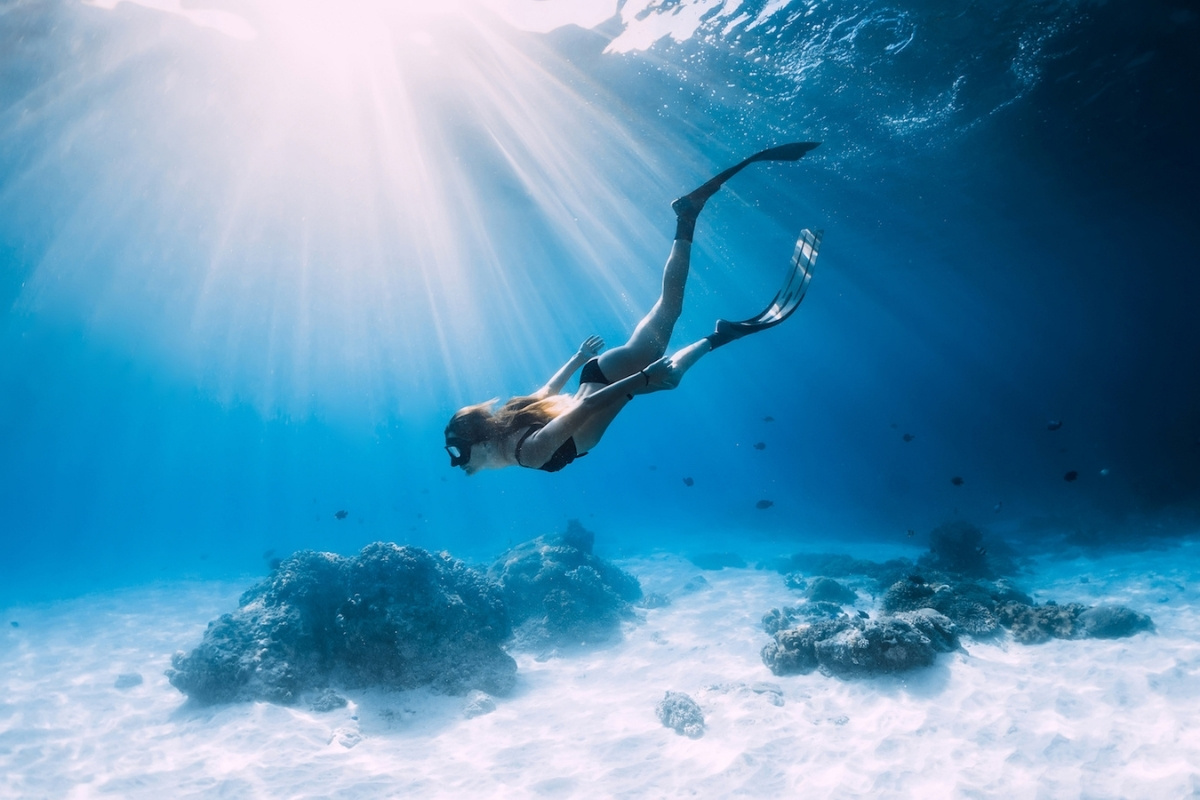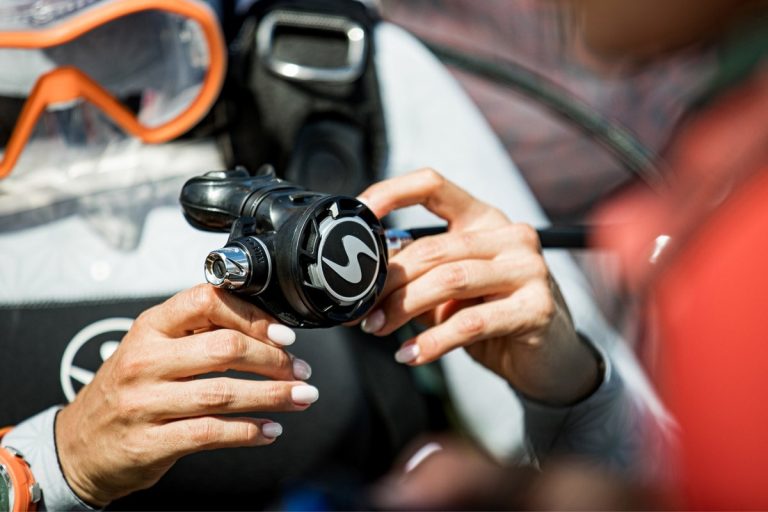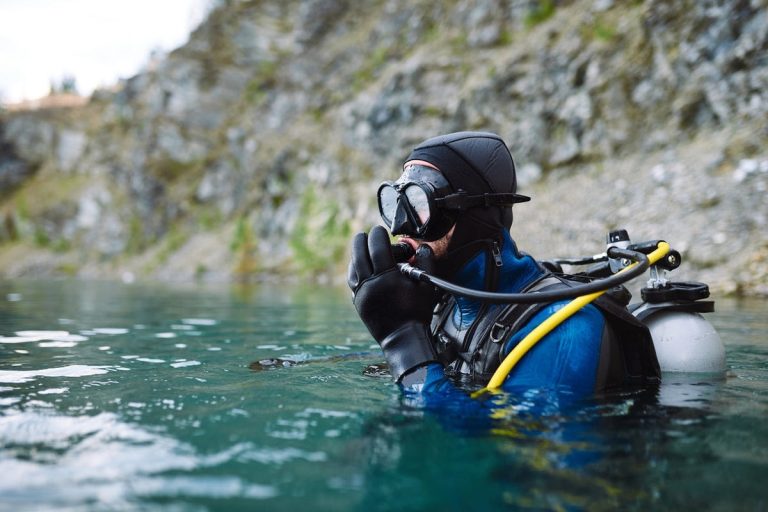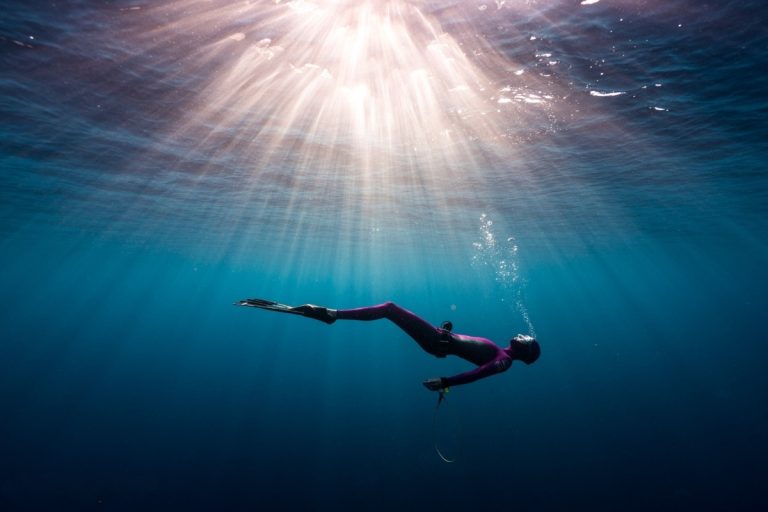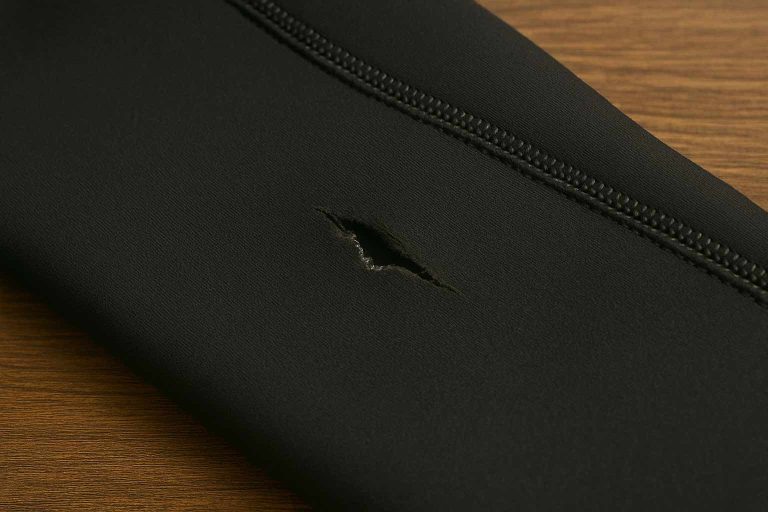Overview of Scuba Diving Fins
Scuba diving fins have transformed dramatically over the decades, evolving from simple rubber paddles to sophisticated pieces of engineering designed for specific diving disciplines. Modern fins incorporate advanced materials, ergonomic designs, and specialized features that cater to different diving styles and environments.
The variety of fin designs available today can seem overwhelming to new divers. From traditional paddle fins to split fins, from lightweight travel options to heavy-duty technical diving models, each design serves a particular purpose. Understanding these differences helps divers make informed decisions based on their specific needs, whether they’re planning underwater photography sessions in tropical waters or preparing for complex technical dives in challenging environments.
Evolution and Variety of Fin Designs
The journey from basic rubber fins to today’s advanced designs reflects decades of innovation in diving technology. Early fins were simple extensions of the foot, designed primarily to provide propulsion underwater. Modern fins incorporate scientific principles of fluid dynamics, biomechanics, and material science to optimize performance.
Contemporary fin designs range from traditional paddle styles that provide maximum power transfer to split fins that reduce leg fatigue during long dives. Some manufacturers have introduced unique blade shapes, venting systems, and flexible materials that adapt to different kicking techniques and diving conditions.
Comparison of Open-Heel and Full-Foot Fins
Open-heel fins offer adjustability and versatility, making them ideal for divers who frequently rent equipment or dive in varying water temperatures. The adjustable strap system accommodates different bootie thicknesses and foot sizes, providing a secure fit regardless of thermal protection requirements.
Full-foot fins present a more cost-effective solution and often provide better power transfer due to their snug fit. However, they require precise sizing and may cause discomfort or blisters if not properly fitted. These fins work best for divers who consistently dive in similar conditions and know their exact size requirements.
Introduction to Travel Fins
Travel fins represent a specialized category designed for divers concerned about airline baggage restrictions and weight limits. These fins prioritize lightweight construction and compact design while maintaining adequate performance underwater. Many travel fins feature neutral or slightly positive buoyancy, reducing the overall weight of diving equipment.
The materials used in travel fins often include advanced polymers and composite materials that provide strength without excessive weight. Some models can be disassembled or folded for more efficient packing, making them ideal for dive travel enthusiasts who visit multiple destinations.
Jet Fins: Durability and Power
Jet fins have earned legendary status among technical divers for their exceptional durability and power output. These fins feature a distinctive design with vents that channel water flow, providing precise control and strong propulsion. Their heavy construction and negative buoyancy make them particularly suitable for technical diving applications where precise positioning is critical.
The robust construction of jet fins means they can withstand harsh diving conditions, including cave diving, wreck penetration, and cold water environments. Many technical divers appreciate the precise control these fins offer during complex maneuvers and emergency situations.
Innovative Seawing Fins
Seawing fins represent a breakthrough in fin technology, combining lightweight design with impressive performance characteristics. These fins utilize a unique blade design that mimics the movement of marine animals, providing efficient propulsion with reduced effort. The innovative construction materials keep weight to a minimum while maintaining structural integrity.
The design philosophy behind Seawing fins focuses on biomimicry, studying how aquatic creatures achieve efficient movement through water. This approach has resulted in fins that provide strong performance while reducing diver fatigue during extended underwater sessions.
Choosing the Right Fins for Travel
Selecting appropriate fins for travel diving requires balancing performance, weight, and versatility. Travel divers face unique challenges including airline baggage restrictions, varying diving conditions, and the need for equipment that performs well across different environments. The ideal travel fin combines lightweight construction with reliable performance and durability.
Weight considerations become paramount when planning dive trips, especially for photographers carrying additional camera equipment. Every ounce matters when trying to stay within airline weight limits, making lightweight fins an attractive option for frequent travelers. Additionally, travel fins should be versatile enough to handle different diving conditions, from calm tropical waters to more challenging environments.
Lightweight and Neutrally Buoyant Options
Lightweight fins designed for travel typically weigh significantly less than traditional diving fins while maintaining adequate performance characteristics. These fins often incorporate advanced materials such as lightweight polymers or composite constructions that reduce overall weight without sacrificing durability.
Neutral buoyancy characteristics in travel fins help reduce the overall negative buoyancy of diving equipment, potentially allowing divers to carry less weight. This feature proves particularly beneficial for underwater photographers who need precise buoyancy control while maneuvering camera equipment.
Cost-Effective Full-Foot Fins
Full-foot fins offer excellent value for dedicated travel divers who consistently dive in warm water conditions. These fins eliminate the need for diving boots, reducing both weight and bulk in travel luggage. The integrated foot pocket design often provides better power transfer efficiency compared to open-heel alternatives.
However, sizing becomes critical with full-foot fins, as improper fit can lead to discomfort or blisters during extended diving sessions. Divers should ensure accurate sizing and consider the potential for foot swelling during long dive days in warm climates.
Adjustable Open-Heel Fins
Open-heel fins provide maximum versatility for travel divers who encounter varying water temperatures and diving conditions. The adjustable strap system accommodates different bootie thicknesses, allowing divers to adapt their thermal protection based on local conditions without changing fin sizes.
This adaptability makes open-heel fins particularly valuable for dive travelers who visit multiple destinations with different water temperatures. The ability to use the same fins with thin tropical booties or thick cold-water boots provides significant packing and cost advantages.
Factors to Consider: Comfort and Fit
Comfort should never be compromised when selecting travel fins, as uncomfortable equipment can ruin diving experiences and potentially create safety issues. Proper fit involves more than just length; width, arch support, and strap adjustment all contribute to overall comfort during extended diving sessions.
Consider factors such as foot shape, any existing foot conditions, and typical dive duration when evaluating fin comfort. Some divers benefit from trying fins with different bootie thicknesses to ensure consistent comfort across various diving conditions.
Technical Diving Fins Recommendations
Technical diving demands fins that provide precise control, durability, and reliable performance in challenging conditions. Technical divers often operate in overhead environments, carry additional equipment, and require fins that respond predictably to subtle input changes. The fins chosen for technical diving applications must withstand harsh conditions while providing the control necessary for complex diving procedures.
Performance characteristics become more critical in technical diving scenarios where precise positioning and efficient propulsion can affect safety margins. Technical divers often prefer fins that offer strong backward finning capabilities, precise maneuvering control, and consistent performance across various diving positions and orientations.
Popular Fins for Technical Divers
Several fin models have gained widespread acceptance among technical diving communities due to their proven performance and reliability. These fins typically feature robust construction, precise control characteristics, and the ability to perform various finning techniques effectively. Many technical divers prefer fins with proven track records in challenging diving environments.
The technical diving community often shares experiences and recommendations through forums and training organizations, creating consensus around certain fin models that consistently perform well in demanding conditions. These community-endorsed options provide valuable guidance for divers entering technical disciplines.
Mares Avanti Quattro vs. Excite Pro
The Mares Avanti Quattro series has earned recognition for its versatile performance and comfortable fit characteristics. These fins provide good power transfer while maintaining reasonable comfort during extended diving sessions. The blade design offers a balance between efficiency and control that appeals to many technical divers.
Excite Pro fins present an alternative option with different performance characteristics and fit profiles. Comparing these models involves evaluating factors such as blade stiffness, foot pocket design, and overall performance in various finning techniques commonly used in technical diving applications.
Diverite XT Deep 6 Eddy and OMS Slipstream
Diverite XT fins have gained popularity among technical divers for their robust construction and reliable performance characteristics. These fins often feature designs optimized for the precise control required in technical diving environments, including effective backward finning and helicopter turn capabilities.
OMS Slipstream fins represent another option favored by technical diving communities. These fins typically emphasize durability and control precision, characteristics that prove valuable during complex diving procedures and in challenging environmental conditions.
4th Element Rec & Tech Fins
4th Element has developed fins specifically designed to bridge recreational and technical diving applications. These fins attempt to provide the versatility needed for divers who participate in both recreational and technical diving activities, offering performance characteristics suitable for various diving disciplines.
The design philosophy behind these fins recognizes that many divers participate in multiple diving activities and benefit from equipment that performs well across different applications. This versatility can be particularly valuable for divers transitioning between recreational and technical diving disciplines.
Comfort and Fit in Fins
Proper fin fit directly impacts diving performance, comfort, and safety. Ill-fitting fins can cause blisters, cramping, or loss of propulsion efficiency, potentially compromising diving experiences or creating safety concerns. Understanding how to achieve proper fin fit involves considering foot anatomy, diving conditions, and personal comfort preferences.
Fin fit affects more than just comfort; it influences power transfer efficiency, control precision, and overall diving performance. Properly fitted fins should feel secure without causing pressure points, allow natural foot movement, and provide consistent performance throughout diving sessions.
Understanding Foot Shape and Size
Individual foot characteristics vary significantly, affecting fin fit and comfort. Factors such as foot width, arch height, toe length proportions, and overall foot volume all influence how different fin models will fit and perform. Some fin manufacturers design their products to accommodate specific foot shapes or proportions.
Understanding personal foot characteristics helps narrow fin selection and improves the likelihood of achieving comfortable, well-fitting equipment. Divers with unusual foot proportions may need to try multiple fin models or consider custom fitting options to achieve optimal comfort and performance.
Avoiding Blisters with Proper Fit
Blister prevention involves achieving proper fin fit and using appropriate protective measures when necessary. Blisters typically result from excessive movement within the fin foot pocket, pressure points, or friction from rough surfaces. Proper sizing eliminates most movement-related blister causes.
Protective measures such as appropriate bootie selection, blister prevention products, or gradual break-in periods can help prevent blister formation. Some divers benefit from using thin liner socks or specialized blister prevention products when breaking in new fins or diving in challenging conditions.
Tips for Trying on Fins
Effective fin fitting involves more than simply checking length; proper evaluation includes assessing width, arch support, heel fit, and overall comfort. When possible, try fins with the booties or thermal protection typically used during diving to ensure accurate fit assessment.
Consider factors such as foot swelling during long dive days, different bootie thicknesses for varying water temperatures, and any foot conditions that might affect fit. Some dive shops allow underwater testing of fins, providing valuable performance feedback before purchase decisions.
Performance Features of Fins
Fin performance characteristics directly influence diving efficiency, comfort, and overall underwater experience. Understanding how different design features affect performance helps divers select equipment that matches their diving style, physical capabilities, and typical diving conditions. Performance factors include propulsion efficiency, control precision, and comfort during extended use.
Different fin designs optimize various performance aspects, requiring divers to prioritize features based on their specific needs and diving applications. Some fins excel at straight-line swimming efficiency, while others provide superior maneuverability and control for technical diving applications.
Material Differences in Fins
Fin materials significantly impact performance characteristics, durability, and weight. Traditional rubber fins provide durability and power but add considerable weight to diving equipment. Modern polymer materials offer lighter weight while maintaining adequate performance for most diving applications.
Advanced composite materials and specialized rubber compounds allow manufacturers to fine-tune fin characteristics such as blade flexibility, power transfer efficiency, and overall durability. Understanding material properties helps divers select fins that match their performance requirements and diving conditions.
Effect of Fin Length on Speed
Fin length directly affects propulsion efficiency and swimming speed, with longer fins generally providing greater propulsion per kick cycle. However, longer fins also require more effort to use effectively and may prove cumbersome in confined spaces or during precise maneuvering situations.
The relationship between fin length and performance involves balancing propulsion efficiency against maneuverability and ease of use. Divers must consider their physical capabilities, typical diving conditions, and performance priorities when evaluating fin length options.
Buoyancy Considerations in Fins
Fin buoyancy affects overall diving equipment balance and may influence weight requirements for proper buoyancy control. Negatively buoyant fins add weight to the lower body, potentially affecting trim and requiring additional buoyancy compensation. Neutrally buoyant or positively buoyant fins reduce this effect.
Understanding how fin buoyancy affects overall equipment balance helps divers make informed decisions about weight distribution and buoyancy control strategies. This consideration becomes particularly important for underwater photographers who require precise buoyancy control while maneuvering camera equipment.
Maintenance and Care for Diving Fins
Proper fin maintenance extends equipment life, maintains performance characteristics, and ensures reliable operation during diving activities. Regular care prevents premature wear, material degradation, and potential equipment failures that could compromise diving safety or performance. Maintenance requirements vary based on fin materials, usage frequency, and diving conditions.
Effective maintenance practices involve both routine care after each diving session and periodic comprehensive inspections to identify potential issues before they become serious problems. Understanding proper care techniques helps divers maximize their equipment investment while ensuring reliable performance.
Rinsing and Drying Fins After Use
Thorough rinsing removes salt, sand, and other contaminants that can cause material degradation or performance issues. Fresh water rinsing should occur as soon as possible after diving, with particular attention to areas where contaminants might accumulate, such as strap mechanisms and foot pockets.
Proper drying prevents mold, mildew, and material degradation that can occur when fins remain wet for extended periods. Avoid direct sunlight exposure during drying, as UV radiation can cause material degradation and color fading in many fin materials.
Storage Tips for Longevity
Appropriate storage protects fins from physical damage, environmental degradation, and deformation that can affect fit and performance. Store fins in cool, dry locations away from direct sunlight, extreme temperatures, and potential physical damage from heavy objects or sharp edges.
Avoid storing fins in compressed or bent positions that might cause permanent deformation. Some fin designs benefit from specific storage orientations or support methods that maintain their intended shape and prevent stress concentration in critical areas.
Annual Servicing Recommendations
Regular inspection identifies potential issues such as strap wear, material degradation, or structural damage that might compromise performance or safety. Annual comprehensive inspections should evaluate all fin components, including straps, buckles, foot pockets, and blade integrity.
Professional servicing may be beneficial for high-end fins or those used frequently in challenging conditions. Some manufacturers offer servicing programs or replacement part availability that can extend fin life and maintain optimal performance characteristics over extended use periods.
Community Insights on Fins
The diving community provides valuable insights into fin performance, durability, and suitability for various diving applications. Experienced divers share real-world experiences that complement manufacturer specifications and marketing claims, offering practical perspectives on equipment performance in actual diving conditions.
Community feedback often reveals long-term performance characteristics, durability issues, and application-specific advantages that may not be apparent during initial equipment evaluation. This collective knowledge helps divers make more informed equipment decisions based on proven real-world performance.
Shared Experiences from Divers
Diver experiences provide insights into fin performance across various conditions, diving styles, and user preferences. These real-world reports often reveal practical advantages and limitations that may not be apparent from manufacturer specifications alone. Community feedback helps identify fins that consistently perform well across different diving applications.
Experienced divers often share specific insights about fin performance in particular diving conditions, such as strong currents, confined spaces, or extended diving sessions. This practical knowledge proves valuable for divers seeking equipment that will perform reliably in their typical diving environments.
Advice from Technical Diving Forums
Technical diving communities often provide detailed analyses of equipment performance in demanding conditions. These discussions frequently focus on specific performance characteristics such as backward finning capability, precise control, and durability under challenging conditions. Technical divers typically prioritize performance and reliability over other factors.
Forum discussions often include comparisons between different fin models, long-term durability reports, and recommendations for specific diving applications. This specialized knowledge proves particularly valuable for divers entering technical disciplines or seeking equipment for challenging diving conditions.
Common Preferences Among Divers
Certain fin models consistently receive positive feedback across diverse diving communities, indicating broad appeal and reliable performance characteristics. Understanding these preferences helps identify fins that satisfy a wide range of diving requirements and user preferences.
Community preferences often reflect practical considerations such as comfort, durability, versatility, and value. Fins that consistently receive positive feedback typically offer good balance between performance, comfort, and reliability across various diving applications and conditions.
Future Trends in Diving Fins
The diving equipment industry continues to evolve, incorporating new materials, manufacturing techniques, and design philosophies that promise to improve fin performance and user experience. Understanding emerging trends helps divers anticipate future equipment developments and make informed decisions about current equipment purchases.
Innovation in fin design often focuses on improving efficiency, reducing weight, and enhancing comfort while maintaining or improving performance characteristics. Environmental considerations increasingly influence design decisions, with manufacturers exploring sustainable materials and production methods.
Innovative Materials and Designs
Advanced materials research continues to produce lighter, stronger, and more efficient fin constructions. New polymer formulations, composite materials, and manufacturing techniques allow designers to create fins with improved performance characteristics while reducing weight and environmental impact.
Biomimicry research influences fin design development, with engineers studying aquatic animal locomotion to improve propulsion efficiency and reduce energy requirements. These research efforts may lead to revolutionary fin designs that significantly improve diving performance and comfort.
Sustainability in Diving Gear
Environmental consciousness increasingly influences diving equipment design and manufacturing processes. Manufacturers explore sustainable materials, recyclable constructions, and reduced environmental impact production methods to address growing environmental concerns within the diving community.
Sustainable fin design involves balancing performance requirements with environmental responsibility, potentially leading to innovative materials and construction methods that reduce environmental impact while maintaining or improving performance characteristics.
Emerging Technologies in Fin Design
Technology integration may introduce new capabilities such as performance monitoring, efficiency optimization, or adaptive characteristics that adjust to diving conditions. While still largely conceptual, these technologies could revolutionize fin design and performance in future generations of diving equipment.
Advanced manufacturing techniques such as 3D printing may enable custom fin production tailored to individual foot characteristics and performance requirements. These technologies could make personalized diving equipment more accessible and affordable for recreational divers.
